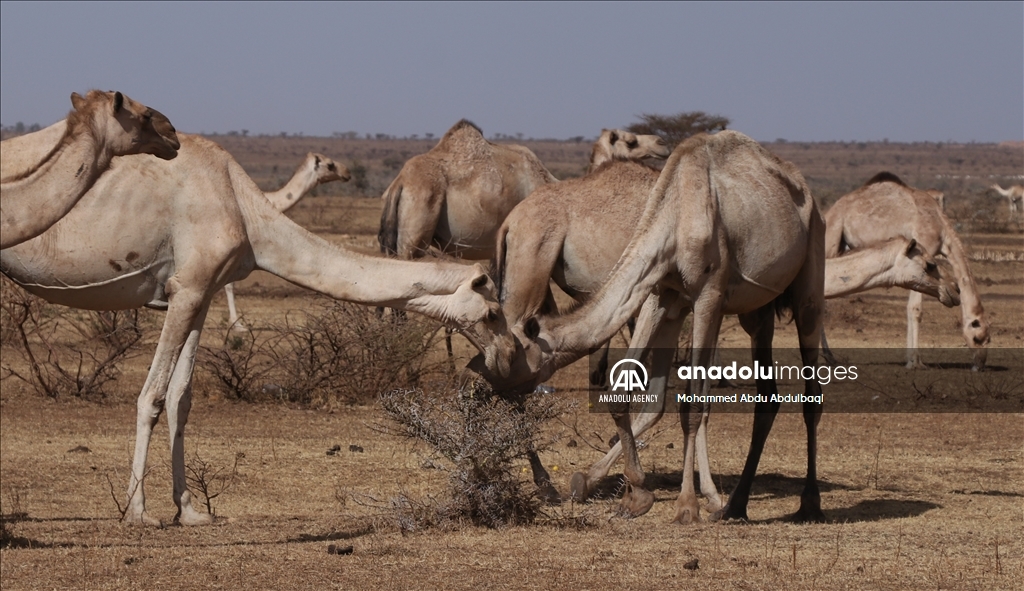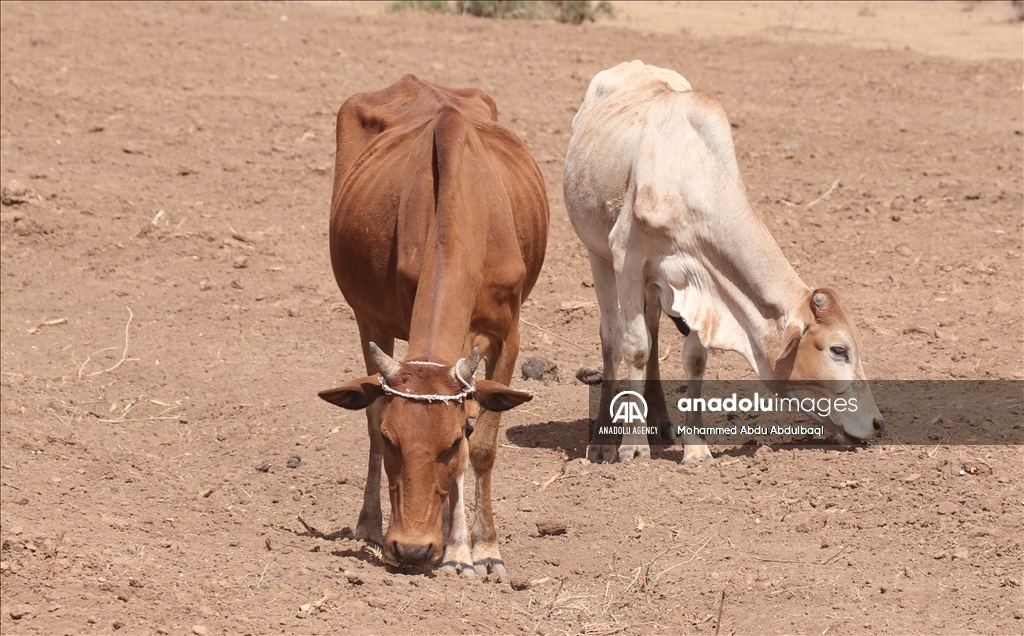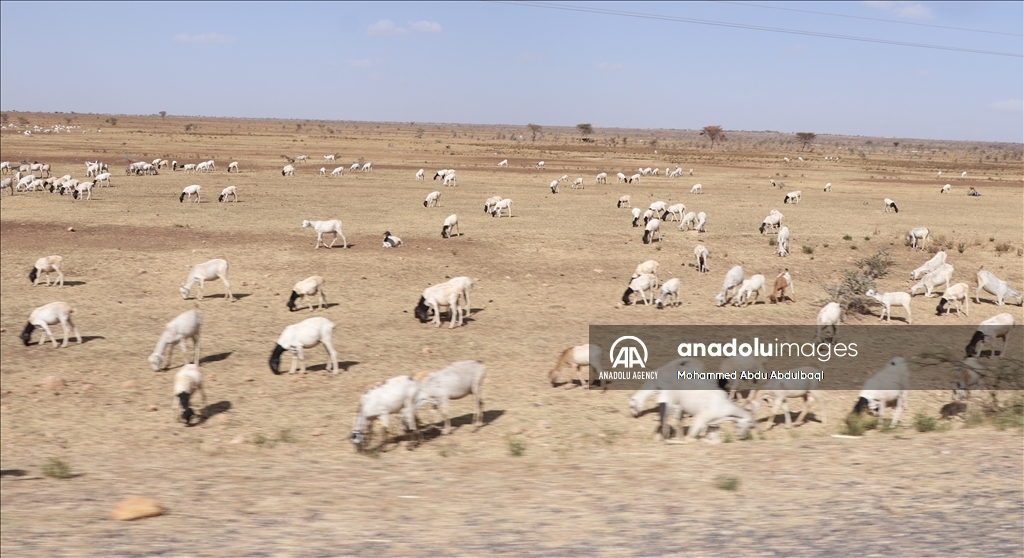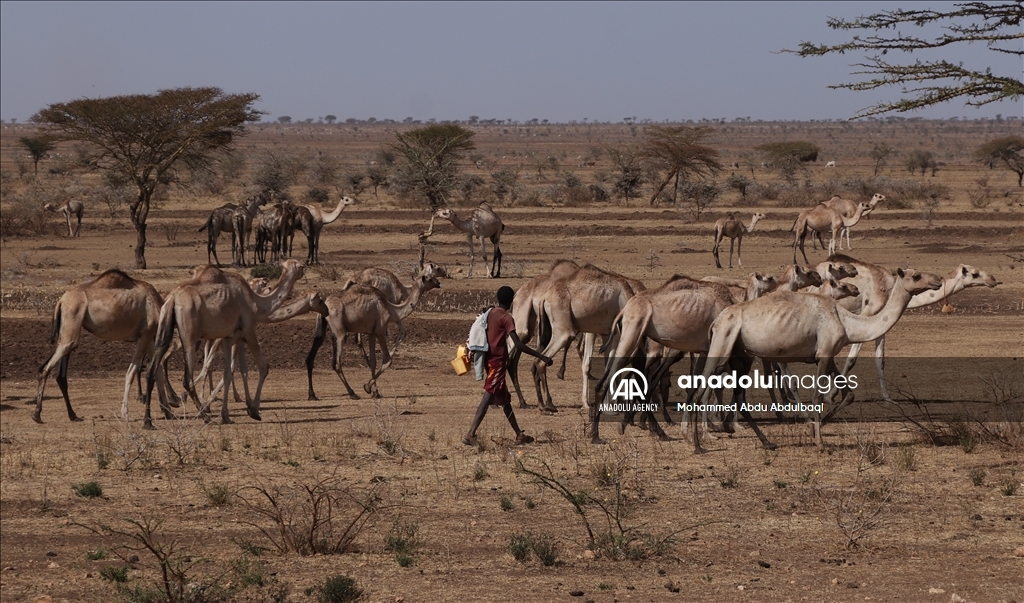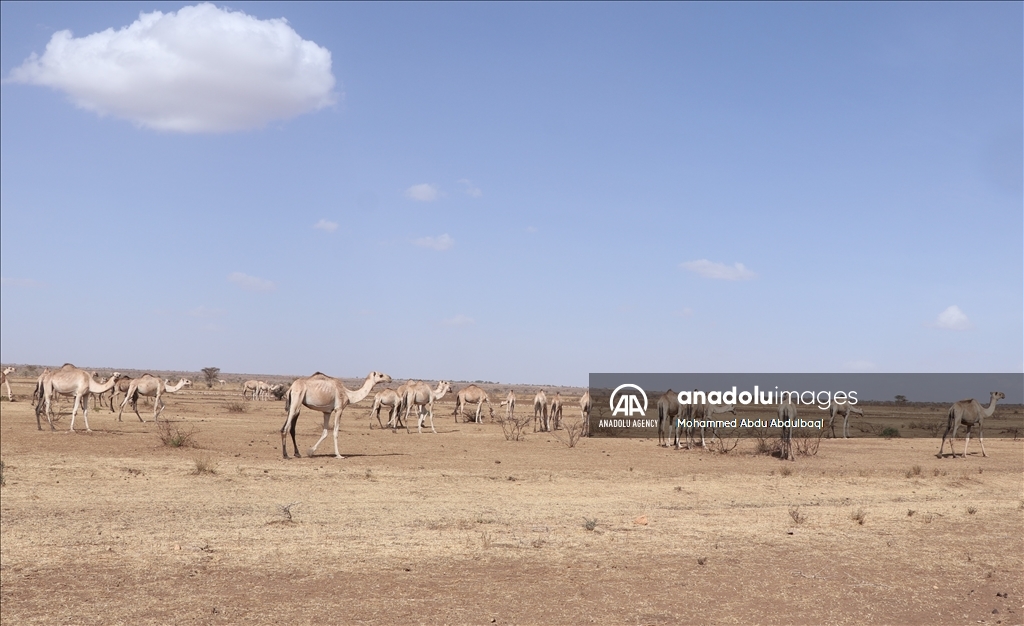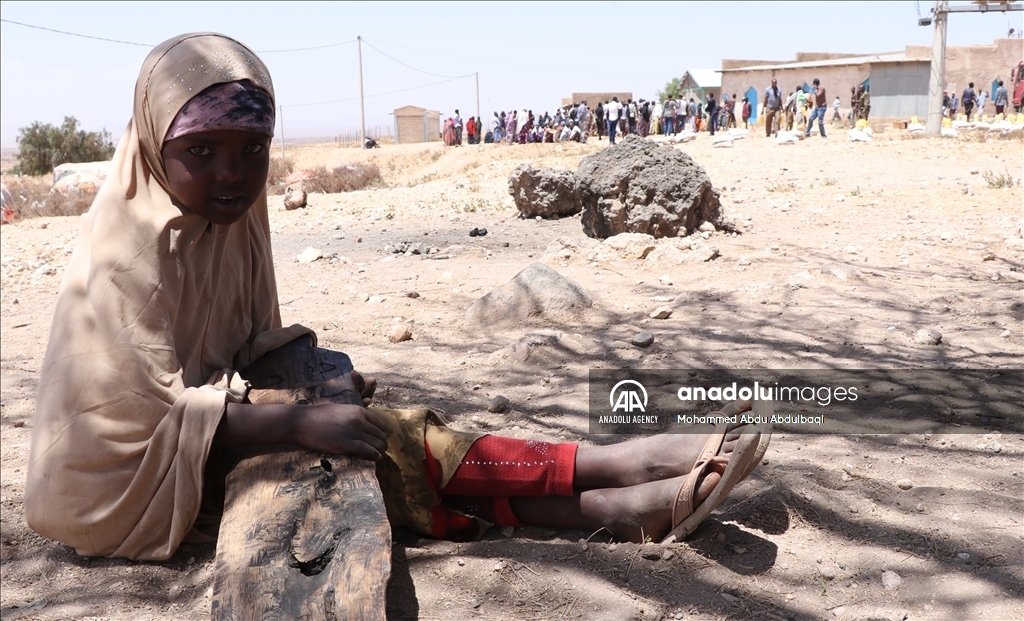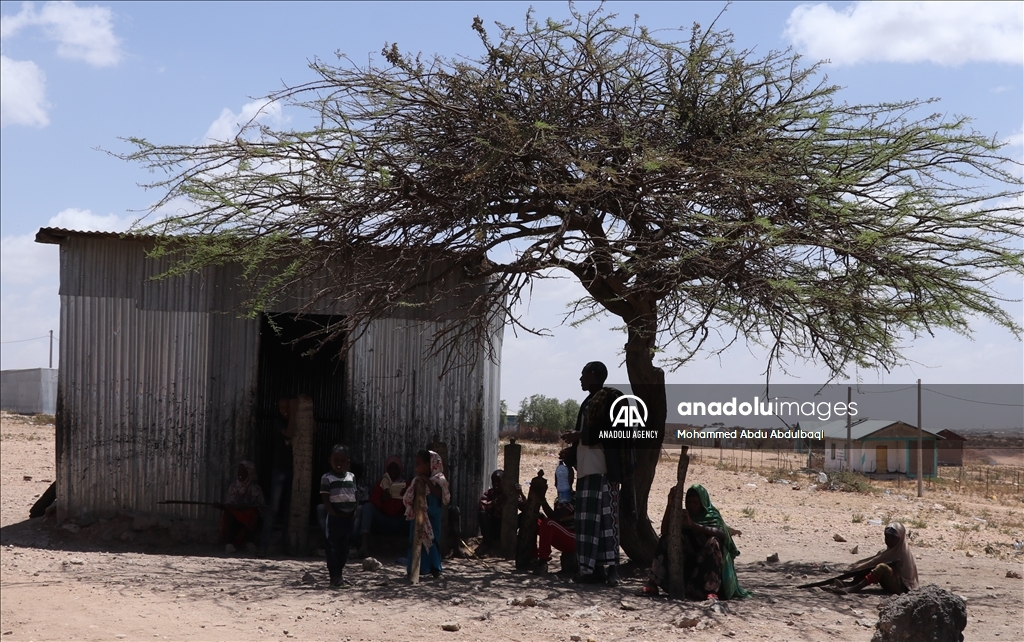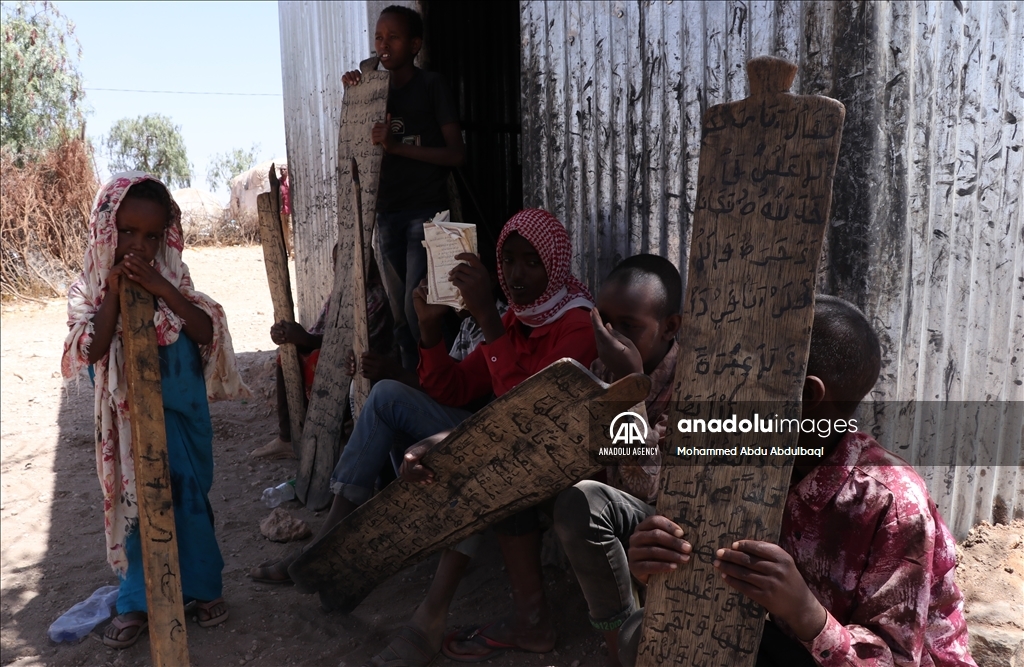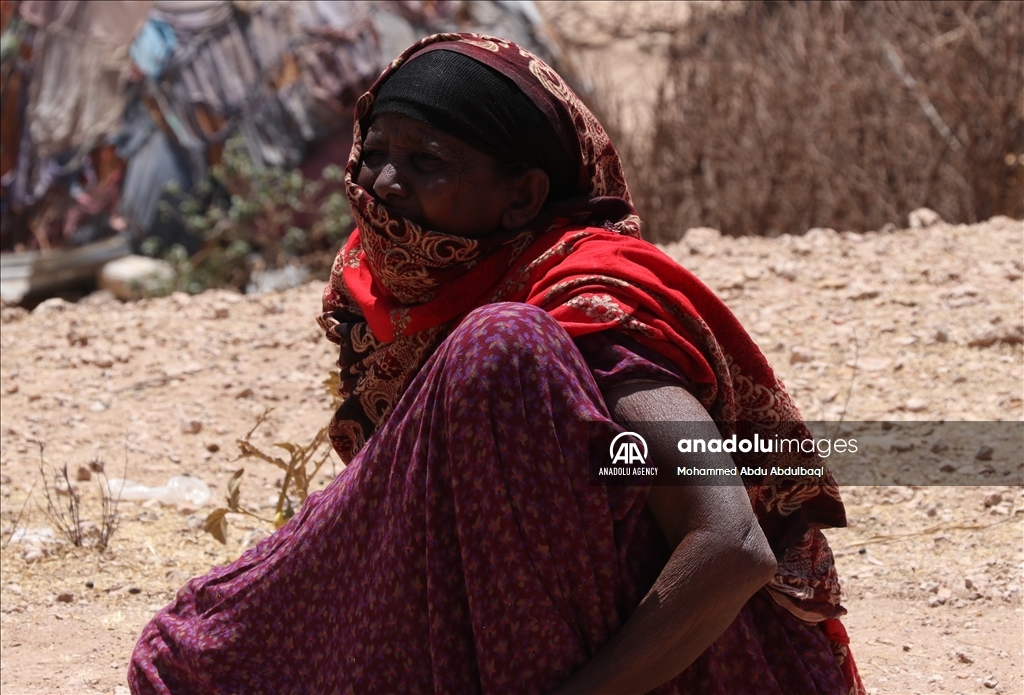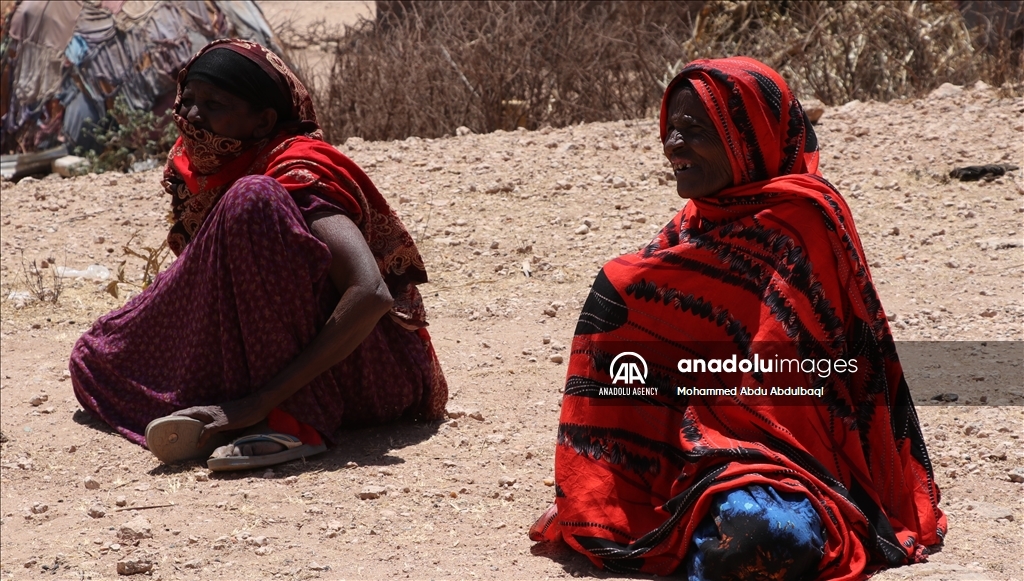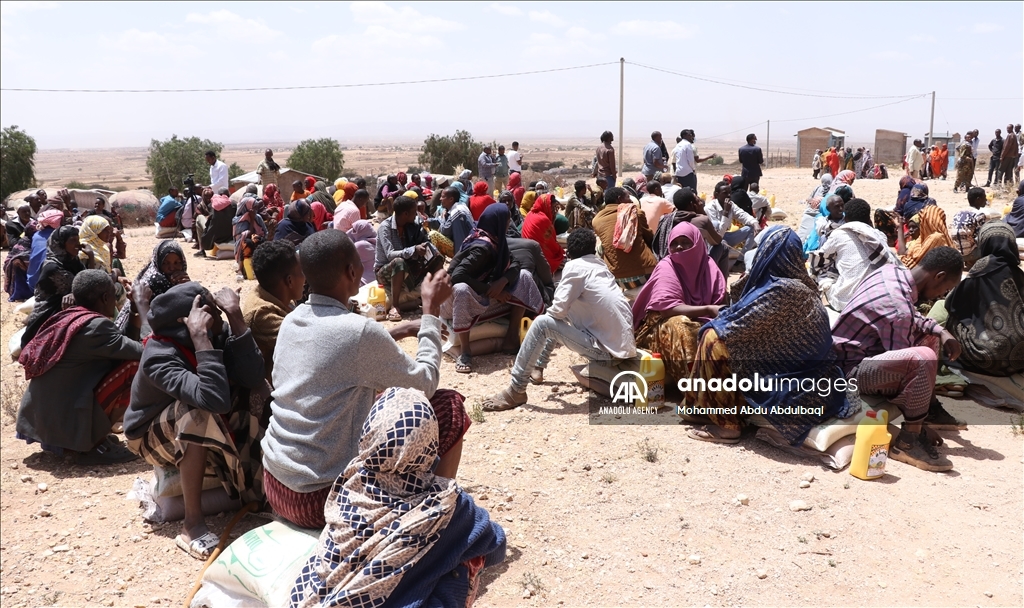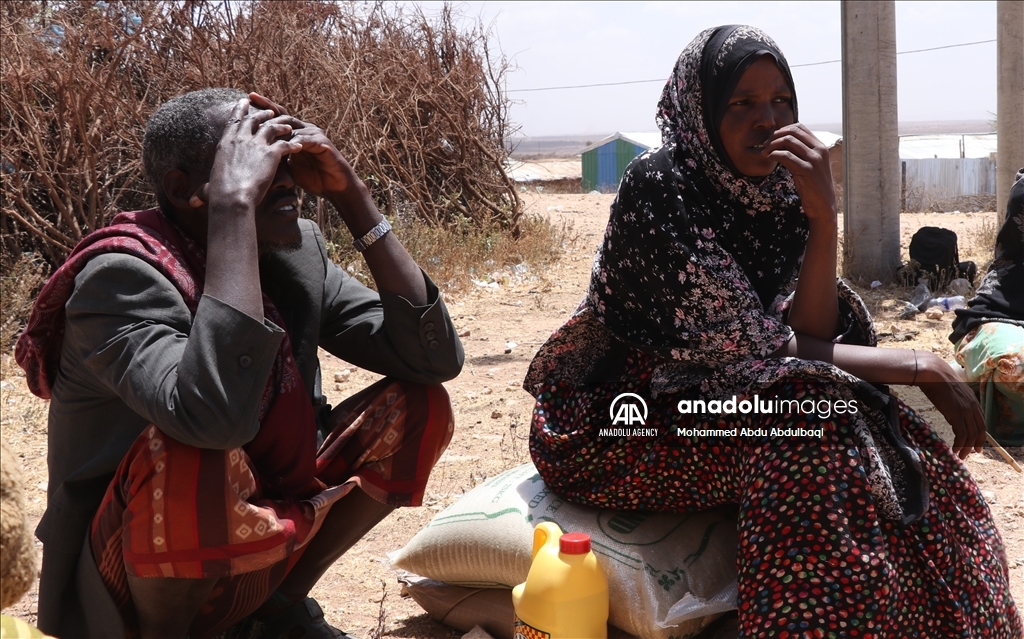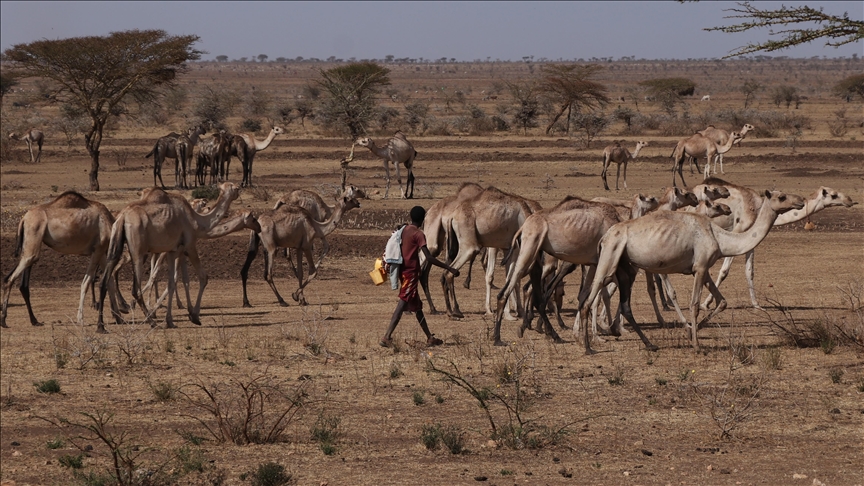
JIGJIGA, Ethiopia
The decomposing remains of livestock that dot vast stretches of land bear witness to the extent of drought in Ethiopia's easternmost province.
The Somali Regional State is the largest province of Ethiopia in terms of land area.
In its worst affected zones, villagers are trying to migrate their livestock westwards to fertile lands.
Abdikadir Umer, a herder, told Anadolu Agency: “I lost more than 100 goats to the drought.
"I rented a truck to transport my goats. I left behind all of my children, 10 of them. I don't know what will happen to them, but I hope food aid will reach them in time to save their lives.”
Num’a Mohammed is a mother of 10 children. She set out from the village of Kebri Dehar with her children and 200 goats.
“I lost 100 goats on the way,” she said as she waited in queue to get food aid.
Government response
Abdulkerim Aden Hassen is a government official involved in distributing food aid at Gerbi Kebele, a locality where the drought-affected pastoralists have gathered with their livestock after making a nearly 400-kilometer (248.5-mile) journey.
They lost too many of their livestock along the arduous journey. A few of them hired trucks to transport their livestock.
“We are giving food to 800 families," Abdulkerim told Anadolu Agency.
"It is the first consignment of food aid made available by the regional Disaster Risk Management Bureau,” he added.
The displaced people have been received by villagers in the less affected zone of Fafen with open arms. The migrants are temporarily dwelling at the homes of the residents, who also proved welcoming in sharing food with their guests.
“Somalis have this way of sharing and they don’t consider the migrants as strangers as they are the same people having the same culture, speak the same language and have the same religion,” Abdulkerim said.
“But as the permanent residents are sharing from what meager resources they have, at some point they will run dry, and so the provision of food aid by the government was deemed necessary to save lives,” he said.
According to him, the number of beneficiaries will be much higher in the coming weeks as officials are reaching out to far-flung localities that have also been affected by drought.
The Somali Regional State's government has set aside $1.5 billion to help the people affected by drought.
Tough challenges
Sadiiq Abdelqadir Khaliif, the deputy head of the regional Disaster Risk Management Bureau, told Anadolu Agency that in spite of the timely drought response by the regional government, there remain tough challenges -- the topmost being the depleting livestock which is the main stay of the vast majority of the people in the region.
"So far, our pastoralist communities have lost more than one million heads of livestock to the drought due to no rains for three years," he said, adding that the dry season is expected to extend as regular rains are forecast to either delay or get scanty during the April-June season.
Blaming the extended drought to climate change, he said: “…we are not even in the pick of the drought.”
A report released by the World Food Programme warns that an estimated 13 million people across Ethiopia, Kenya, and Somalia are facing severe hunger due to the driest conditions recorded since 1981.


